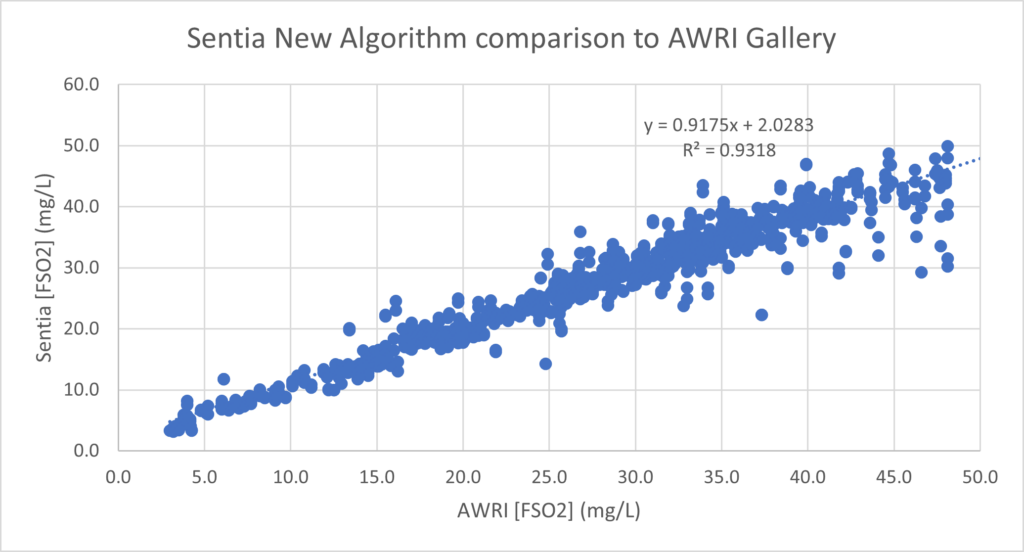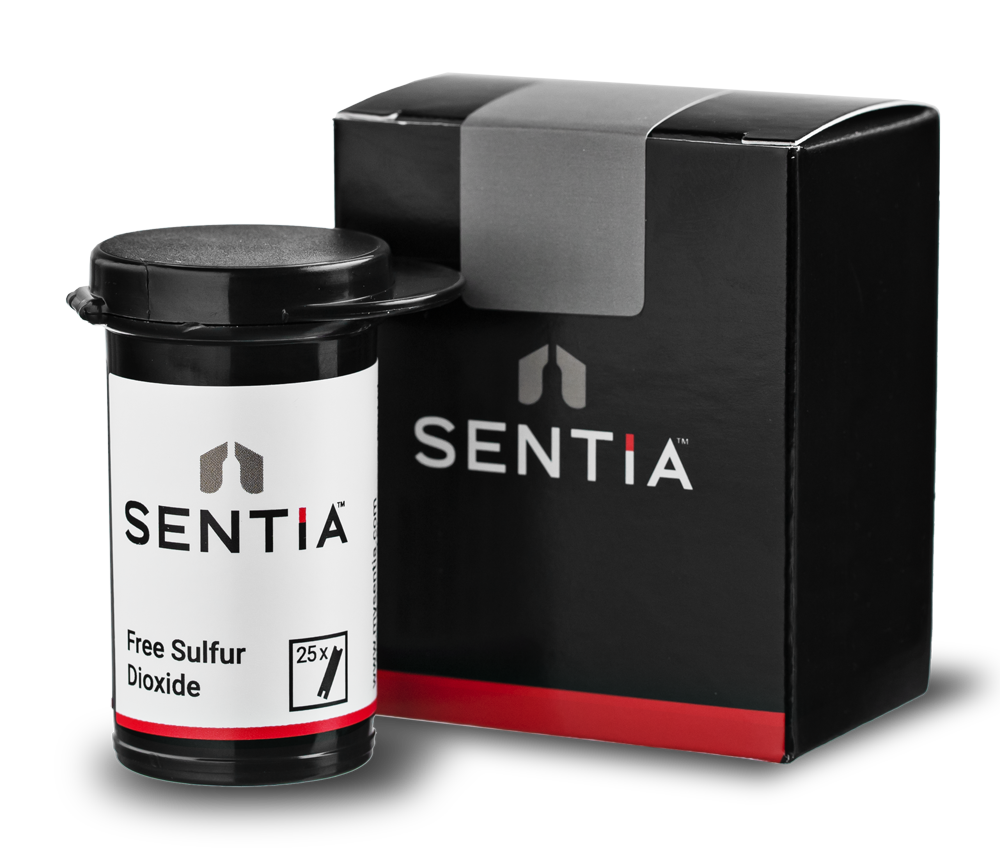After launching in 2021 with a commitment to continuous improvement, the team at Universal Biosensors (UBI) recently circled back to where it all began to enhance the existing free sulfur dioxide test.
The strip chemistry remains the same and UBI still uses the same patented technology our customers have come to love worldwide. So what has changed? Using machine-based learning the scientists behind Sentia have implemented a more sophisticated method by which the meter analyzes each sample profile. The new algorithm has been trained using thousands of data points to more accurately predict the free sulfur concentration based on the Thermo Gallery reference method.
The results, based on a newly collected Australian Wine Research Institute (AWRI) dataset (n=967) is a significant improvement in overall accuracy.
| Criteria | Original algorithm | New AI algorithm |
| Standard error (mg/L) | 3.9 | 2.9 |
| Coefficient of determination (r2) | 0.87 | 0.93 |

What are machine based learning algorithms and why are we using them?
The new free sulfur method now utilizes machine-based learning where an algorithm is trained on a large dataset of wine samples of different types to accumulate a diverse range of training data. The algorithm uses data mining methods to learn patterns in the training data set that would not be visible to an algorithm implemented in the original method. These learnings are applied to wines not seen before to provide more accurate predictions of the free sulfur dioxide content. UBI has been working with these types of algorithms since 2020. Due to the fact that machine-based learning algorithms can identify patterns and trends in data that may be challenging for humans to recognise, the capability can lead to more accurate predictions and insights than more traditional methods of algorithm implementation.
